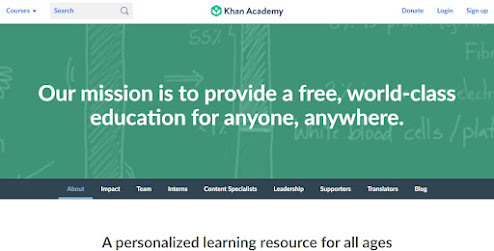Introduction
Purpose
Having a history of integrating technology into my
instructional practices, I found that technology has beneficial results for
student learning. Involving technology resources into instructional practices
can enhance student learning and engagement. I created this informative website
as a tool to support and inform educators on fusing technology into their
instructional practices. This website contains resources on the advantages of
applying technology to instructional practices, insight on how to successfully
incorporate technology, and instructional tools to make the integration of
technology simple.
Philosophy
My
philosophy for applying educational technology to my instructional practices is
to differentiate teaching by redesigning traditional techniques by using the
SAMR Model to personalize my approach to support diverse learners. I apply the SAMR Model when constructing my
instructional practices to be the framework for how I can support my
instruction and transform the curriculum to target diverse learners. The SAMR
Model allows me to evaluate what level of technology I am integrating into my
instructional practices to improve student learning without taking away from
the agenda.
Equitable use
Technology in the classroom can be used as a tool that
offers instructional support, as well as informational resources, and can
reinforce learning. Therefore, it is essential that students have equitable
access to technology inside and outside of the classroom to support
instructional practices and student learning. Although there can be many
barriers to overcome when it comes to all students acquiring electronic devices
and internet access, educators can strategize to reduce the digital divide.
When technology is integrated into the curriculum, the educator
should consider three factors. The teacher should determine how many electronic
devices are available in the classroom, how many students have access to
electronic devices at home, and how many students have access to the internet
connection in their homes. If possible, allow every student in the class to use
and take home their own tablet for learning materials and homework. If there
are not enough electronic devices for all students to work independently,
create lessons that involve collaborative learning to share devices and allow
students who do not have at-home devices to borrow one. As for students that do
not have an internet connection in their homes, provide their parents with
information about locations with free internet connections or low-cost internet
provider details. Lastly, adjust the material required on the devices to be
pre-downloadable for students without an internet connection. With these
measures in place, all students will have equal means to technology.
Ethical use
When integrating technology into the classroom, it is
critical to ensure that students are employing technology ethically. To
guarantee students’ safety on the internet, the Children's Internet
Protection Act (CIPA) was established in 2000 for schools and libraries.
CIPA is an internet safety policy that monitors students’ activities and
filters or restricts any harmful and inappropriate material. CIPA will certify
that students stay protected on the internet while remaining on Teacher
approved websites.
With the continuance of integrating technology into
classrooms, it is imperative that educators and students have the proper
understanding of how to not plagiarize or use copyright/ trademarked content
and comprehend why it’s important to cite their sources. Therefore, educators
should teach and continually reinforce how to properly cite material from the
internet. Then, teachers could support the importance of citing material by providing
a relatable example to the class. For instance, the teacher could express how
Student A drew and painted a picture but when they turned it in, they forgot to
put their name on their work. When the teacher examined the photo, they praised
the photo and hung it in the class for everyone to see. Since the teacher did
not know which student to recognize for the artwork, they asked the student
responsible for the art to claim the photo. Before Student A could acknowledge
the ownership of the art, Student B claimed the photo as their own and received
all the credit. Then the teacher can proceed with the example by questioning
the class about why plagiarizing is wrong and Student A’s feelings. By using an
understandable example with the class, the teacher can express the importance
of citing and why it should be done.
Social Responsibility
Educators must teach learners to be good “digital
citizens” by using technology socially responsibly, as well as promoting
productive and respectful interactions. Becoming a good “digital citizen” is
understanding the appropriate way to use and interact with others on electronic
devices. This can be achieved by showing the student’s how to successfully
manage their devices while being safe and responsible with interactions. Teachers
can reinforce expectations of establishing social responsibility with
technology by monitoring interactions and modeling desired behavior.
In addition, educators should inform students of their
digital footprints and how they can leave a mark on the world, but it is up to
them whether is beneficial or not. Learners should understand the importance of
leaving their digital footprints and that once something is on the internet, it cannot be deleted or removed. Teachers should emphasize to their students that
words and actions can impact others and cannot be undone. Therefore, stressing
the gravity of not harassing or cyberbullying.
To demonstrate the significance of social responsibility
when using technology, the teacher could have their students perform a Google
search of their names or families’ names to locate what is available to the
public on the internet.



Comments
Post a Comment